WORLD REPORT • WILDLIFE
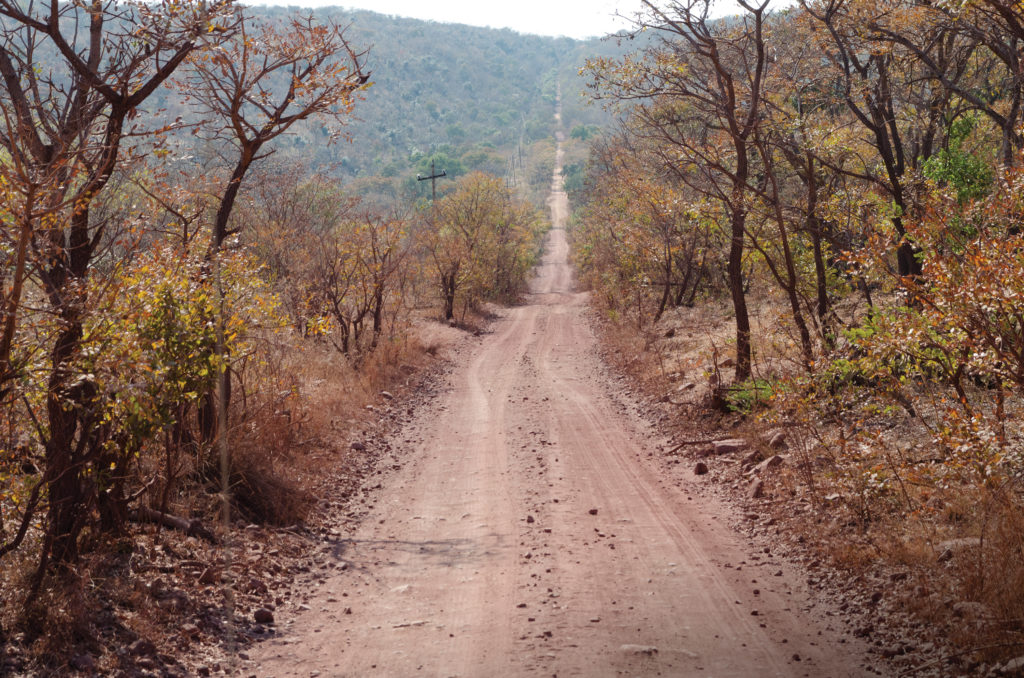
VETERINARY MEDICINE DRIVES CONSERVATION OF NATURE PRESERVING AN INHERITED EDEN
Building fences that limit space, in both South Africa’s national parks and private reserves, has resulted in an artificial control of nature to maintain a balance in which a greater awareness of the care for animals and the preservation of the environment is needed
BY CARLA FIBLA | JOURNALIST, REPORTING FROM LIMPOPO
A GROUP of ten young people who have recently graduated or are in the last years of the Veterinary Medicine course, originally from various locations in Spain, Canada, the United Kingdom, Romania and the United States, have just completed the first part of their trip to South Africa. Together with the Spanish-South African organization Wild Spirit, they are checking difficulties on the ground and the changes that animals experience in their natural habitat. They arrived at O.R. Tambo Airport, Johannesburg from Port Elizabeth with their fresh memories of helping to cut the horns of rhinos in a responsible way and as a measure to avoid poaching—in a reserve in the semi-desert area of the Karoo.
It is a professional theoretical-practical course, created a decade ago by Fabiola Quesada and Brendan Tindall, veterinarians specialized in wildlife, which more than 250 people have already attended. Twice a year, they organize a trip in which they go through real wildlife and captivity animal care situations. Thanks to the economic contribution by the students, the work of professionals in the field is paid for, making possible the necessary examinations of the animals. “It is a system in which everyone wins: my clients, because my time and my work to treat the animals in the reserve is paid for by the students, and at the same time, they have access to a unique and authentic experience. Sometimes we have to change the programme. They adapt to what I should do, and if there is an emergency, they come with me”, says Tindall.
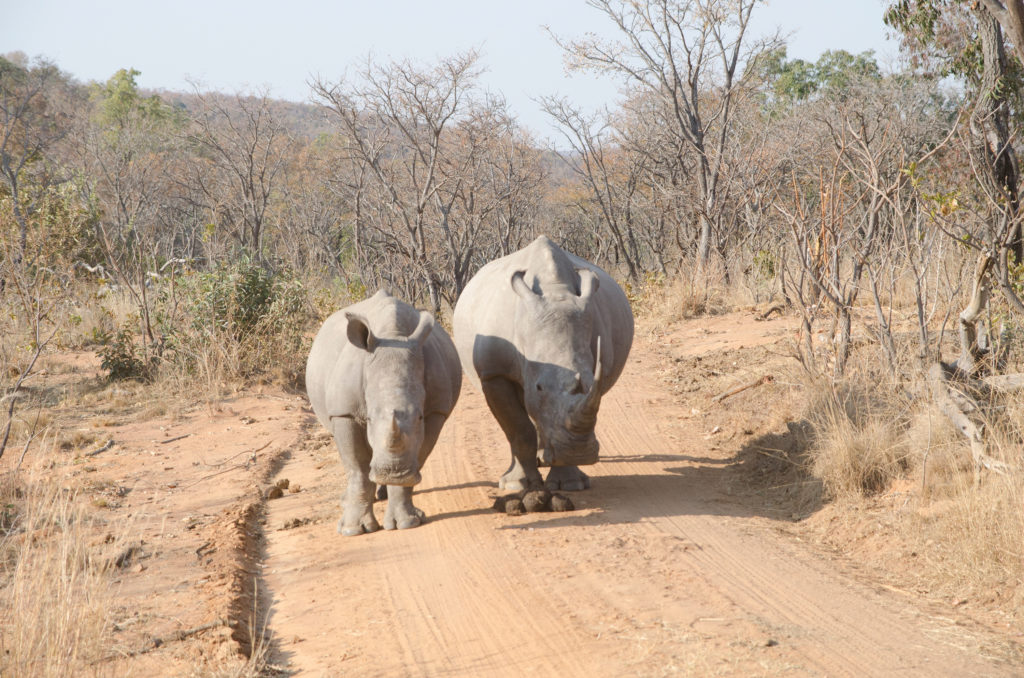
In the following days they will experience the annual elephant sterilization campaign, the operation on wild lionesses to limit the number of cubs that they will have, and the total castration of lionesses brought from the zoos in Europe—since they must not have cubs after having recovered from extreme physical conditions. In addition, they will do a complete examination of some cheetahs in captivity, drawing blood to record their DNA, weighing them, measuring them and checking the condition of their skin, information that later will be used to breed them and make sure that the new cubs born in captivity will eventually be able to survive in the wild.
Veterinary medicine
“The application of medicine can be approached in different ways, as a doctor or as a veterinarian. It does not mean that you dedicate yourself only to supply medicines, but you analyse an animal from the medical perspective, its physiognomy, its anatomy, nutrition, and give advice or diagnosis, keeping those medical principles in mind. We start from our medical and environmental knowledge, and apply them to conservation, to help in the preservation of the animal species and the decisions that are made to benefit them”, continues Tindall.
It is team work, between owners of nature reserves—private extensions in which the owners must take care of the fauna who live there—and the people who observe possible changes in the animals´ behaviour every day, and professionals, veterinarians and conservationists, who must maintain the natural balance in the habitat.
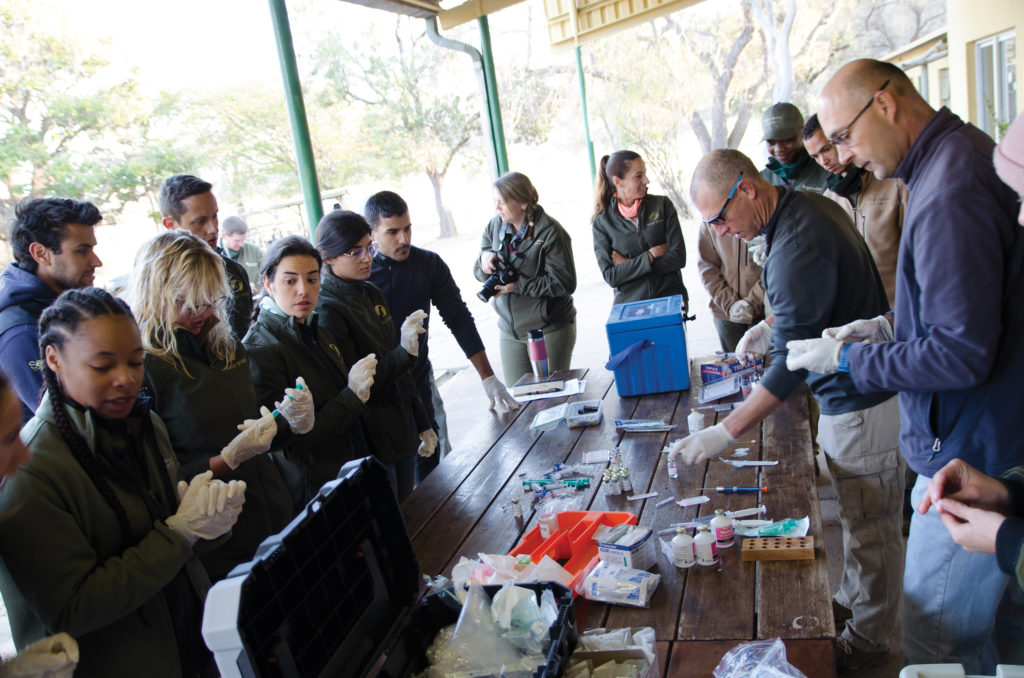
One of the concepts that are analysed from different perspectives during the course is the respect for each animal: “None is more important than another, and neither are we more important than them, even if we believe it. Each patient must be treated with the respect it deserves, and that should happen when you physically immobilize the animal to inspect or practise any intervention or surgery, and also when you give a recommendation about the conditions of life in which the animal should live”, explains the vet.
Currently, the limitations in the movements of the wild fauna are a reality. There is hardly any place on the African continent in which animals are not surrounded by fences. In recent decades, man´s actions to prevent wildlife from destroying crops or attacking cattle have grown.
The objective is to achieve “an equilibrium between conserving diversity biologically, promoting economic development and maintaining the associated cultural values”
“In the big reserves we see the tendency to reduce the extent of the areas for a higher control and exploitation of its resources. The effect of this action, aimed at maintaining biodiversity, is the impossibility for animals to move freely and, finally, the need to intervene for the good of the flora and other animal species. You cannot concentrate on one species because, for example, if you let the elephant population grow, they will destroy the habitat, and that affects other animals and the vegetation. We have seen it in northern Botswana, where the number of elephants has grown so much that the trees are gone”.
Shared habitat
“We do not sterilize to have less animals and allow more space for humans. It’s the other way around, we pretend to create more space for wildlife. If we look back, 20 or 30 years ago, we had less space dedicated to wildlife and conservation than the current one. People are aware, since this is about improving our understanding of how to manage those wild areas”, says Tindall.
Human intervention in wild animals combines speed with precise action because the time of the anaesthesia is limited and you have to make sure that when the animal wakes up, it will not have any side effects that could affect its life; these are factors that generate tension and require absolute concentration.

Partial sterilization practice on lionesses in the Welgevonden Reserve aims to have two instead of five cubs, so the litters are easier to handle and they continue to meet the objective of attracting tourists interested in the behaviour of animals that, in a way, maintain the place.
“The days when animals could wander about and freely reproduce are running out, and if a reserve wants to survive and justify its existence, it needs the visits of the customers. Even in Kenya or the Serengeti (northern Tanzania), in open spaces, they have to intervene. There are remote areas in Zambia with wildlife, but the tourists’ support for conservation is needed increasingly”, explains Tindall. He addresses the always controversial hunting issue, necessary when it’s done ethically and under control, but still a form of exploitation of the continent. “The reserves would not exist if it weren’t for hunting. In 90% of the cases there would have been no equilibrium of wildlife in a reserve if it weren’t for the hunt that takes place inside, because the owner of the land generates income from that activity”, he concludes.
The way of nature
One of the differences between animals that live in natural parks, managed by the government, and private reserves, is that the intervention in national parks is more limited. They do not intervene when animals are injured accidentally, or when their lives are in danger because of their physical condition. They only do it to preserve an endangered species, such as happened with cheetah or wild dogs in South Africa, when they needed to be protected as a group.
Sam Davidson-Phillips is the conservation director of Welgevonden Reserve, located in the Waterberg district in Limpopo, in the northeast of the country. It is 37 000 hectares in extent with 50 mammal species, including the Big Five, i.e., lion, leopard, elephant, buffalo and rhinoceros.
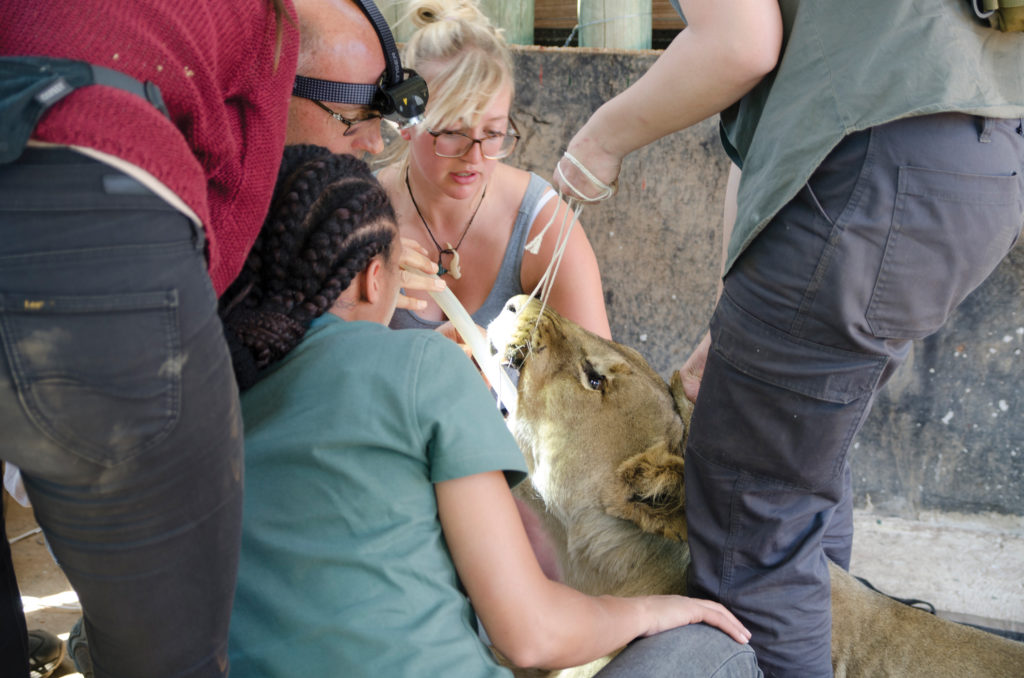
In the early morning he shares with Wild Spirit students, the preparation, under Peter Caldwell’s supervision—one of the most experienced and recognised vets in South Africa—of the mixture in the syringes that will be shot from the helicopter. “We carry out the contraception in elephants because in extensive reserves, such as Welgevonden, we have a fairly large population, about 115 animals, and we need to monitor their growth to preserve their impact on vegetation, in the destruction of trees,” he explains while assuring that the objective is to achieve “an equilibrium between conserving diversity biologically, promoting economic development and maintaining the associated cultural values”.
“It is interesting that, to preserve these wild animals, we must manipulate their existence, but they also need space to exist”, remarks Caldwell, after mentioning the responsibility of humans when they also decide to procreate. “It is the same with lions and elephants, why not in humans? We are talking about growth of the population, what people eat, what impact does agriculture and wildlife have, and how are they connected”.
The world has to understand the need to protect wildlife at all levels
Alongside Davidson-Phillips there is a team exclusively dedicated to the biomonitoring of the reserve. Carmen Warmenhove is the co-ordinator. Sitting on the front of an open transport in which students spend hours observing nature, she ensures that the monitoring of black and white rhinos, as well as predators, prey species and vegetation, allow the students to provide information to the managers of the nature reserve. “This is how the balance is maintained, especially in fenced reserves, because if a population exceeds a certain size, it could have a harmful cascade effect on other species of animals and plants”, she adds.
One Health
Peter Caldwell, who combines his interventions to wildlife in South Africa, Tanzania, Somalia and other eastern countries of the continent with his animal clinic, Old Chapel in Pretoria, says, “humans have intervened to such a point that they have destroyed every part of the natural habitat, and now wildlife must be controlled and interfered within more than half of the cases, to make it work again”
Caldwell, like the founders of Wild Spirit, is an absolute defender of the One Health concept, in which communities are educated, for example, in the vaccination of their dogs, so that they do not transmit diseases to wildlife that ends up affecting humans when they eat it.
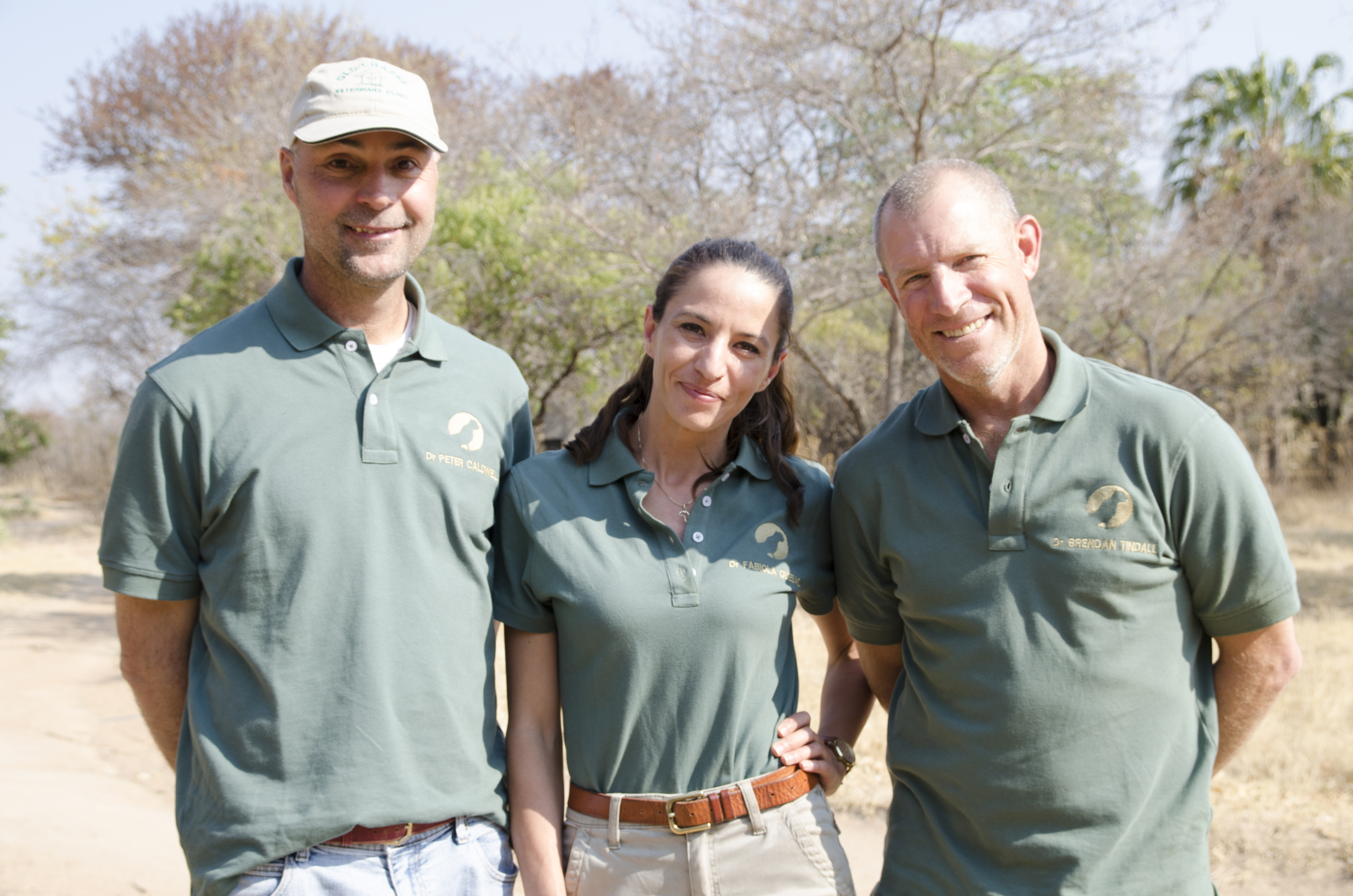
and Brendan Tindall.
“The world has to understand the need to protect wildlife at all levels. We are trying to create an infrastructure for the vets to do their job. Unfortunately, in universities they don’t teach about wildlife yet. There are some congresses, but they are aligned towards zoos, with a European or Western mentality—and there is not even one congress about Africa and wildlife”, explains Quesada, who considers that today’s slow and long term measures are insufficient.
“Climate change is created by human beings, and the extermination of species affects climate change. We know that there are several elements involved, among them, poaching, the increase of population, consumption of wild animals, which is likely the origin of the current pandemics—and of many that are still to come. Moreover, the indiscriminate consumption of wildlife in the last twenty years and the ever-increasing demand for protein from wild animals by humans. Furthermore, there is an elite group of people that spends a lot of money and wants exclusive things, and either alive or dead wildlife is one of them”, said Quesada.
